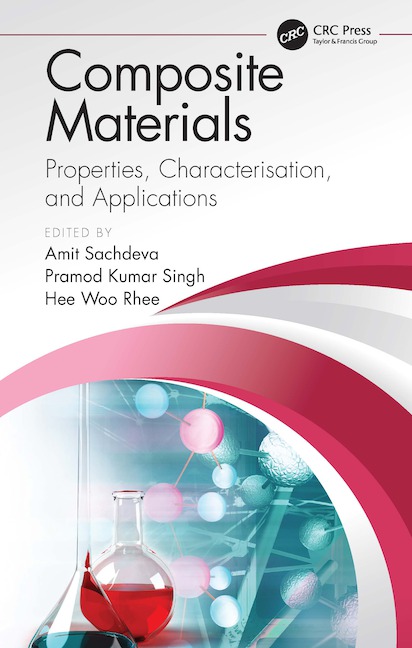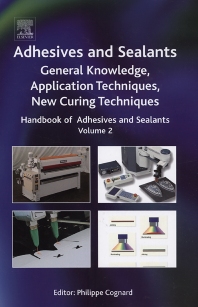Addressing Demographic and Market Shifts with Additives


Figure 1

Figure 2

Figure 3

Figure 4

Figure 5






According to Trulia, young adults aged 26 to 34 are having difficulty making the transition from signing rent checks to submitting mortgage payments on their first home. In previous decades, this demographic used to be the primary group to identify as first-time homeowners in single-family homes. Instead, Millennials -along with their older baby boomer counterparts in their 50s -are opting for multi-residential housing rental units rather than owning property, according to the National Association of Realtors.
This transition toward multi-residential housing impacts the paint and coatings industry and how products are sold and used. DIY projects and homeownership tend to go hand-in-hand, as the results can improve the value of a home. However, those who live in multi-residential homes tend to have less of a stake in their property. That leaves building owners with the task of improving temporary residences, often outsourcing these jobs to contractors. Similarly, as homeowners who previously took on DIY projects begin to grow older, trends show that they tend to delegate painting projects to professional painters as well.
A Contractor’s Journey to Customer Satisfaction
Knowing these trends can help paint manufacturers better understand their evolving customer base and start to consider the different needs of paint contractors and DIYers. Most DIYers are primarily concerned with the final aesthetics of their paint and the luxury of a quick dry time. Similar to industrial coatings, efficient dry time allows for an expedient “return-to-service” for a room that may later serve as the backdrop to entertaining friends and family that night.
However, paint contractors have different requirements when they select a can of paint. Appealing to this growing market requires a deeper understanding of their objectives and multiple performance goals. Finding a single product that achieves all the benefits they are looking for can be difficult. The secret ingredients to combining excellent performance and application properties into one formulation are additives. Specifically, rheology modifiers can help improve paint performance for contractors, ultimately saving them time and money while improving the finished product of a painted substrate. Additive benefits can range from enhancing appearance and surface smoothness, improving ease of application through flow and leveling, and reducing VOC levels by replacing solvent used to reduce viscosity with non-volatile options.
When marketing to paint contractors, it is necessary to consider the whole value chain, including the painter, the architect, the designer and the client. With more players in the game, more considerations, requirements, specifications and needs exist when compared to a single DIY painter. And by design, collaborating with the architect and the designer adds complexity to achieving a contractor’s primary goal: customer satisfaction with the final result.
Customer satisfaction stems from being able to deliver a painted wall or room with good aesthetics. Paint contractors need to achieve this goal in the least expensive, most time-efficient manner to maximize profits by getting the results they expect the first time. According to a survey conducted by the Paint Quality Institute, the top paint problems identified by contractors include “needing multiple coats” and “not covering as expected.” Addressing these issues and achieving expected coverage from the outset can be accomplished by understanding the specific properties offered by a paint’s formulation.
Adding Flexibility, Performance and Application Ease with Additives
When it comes to reducing the number of coats - often a primary objective - contractors look for at least one, or both, of the following properties: excellent coverage and a smoother application. These paint properties result in better aesthetics for the client, while also lessening the need for touchups that could negatively impact a painter’s schedule and require them to return to what should be a completed project.
Improving paint coverage properties of a formulation can help ensure old wall colors are masked, potentially without a primer. This can help eliminate dry time required between coats and allows contractors to reduce time dedicated to one project. Using a paint formulation that offers excellent coverage as a core benefit is therefore important for contractors to consider; however, the aesthetic quality can also be affected by application factors. To ensure a paint will cover existing colors and enhance overall surface appearance, applicators desire a paint that provides enough flow to ensure an even, uniform application while, at the same time, exhibiting enough “sag” so that it is easy to apply without dripping.
Finding the right balance between sag and flow can be difficult for formulators to achieve. Typically, they have relied on using both cellulosic and hydrophobically modified ethylene oxide-based urethane (HEUR) rheology modifiers to achieve desirable application properties, resulting in compromised smoothness and sag resistance. As shown in Figure 1, a conventional HEUR in a typical PVA paint formulation performs poorly when it comes to sag/leveling balance properties. To address this challenge, Dow developed a new category of rheology modifier that combines the sag resistance of a cellulosic thickener with the flow and leveling of a HEUR rheology modifier. In recent years, Dow evolved this technology in the form of ACRYSOL RM-725 rheology modifier, which offers the desired level of performance in contractor-quality paint without solvent or surfactant.
Paint viscosity also plays a role in application time and performance. While DIYers tend to favor roller and brush-applied paints, paint contractors often prefer spray and back-roll application, as it allows them to move swiftly within rooms while achieving similar results to roller- or brush-applied paints. In these application spaces, hydrophobically modified alkali soluble emulsion (HASE) thickeners may offer additional performance benefits. New ACRYSOL™ DR-180 rheology modifier can help flat through semigloss paints achieve improved surface smoothness in all types of applications, including touch up, when compared to cellulosic rheology modifiers (Figure 2).
For contractors whose clients prefer the aesthetic of roller-applied paint, rheology modifiers can optimize a paint’s viscosity during application. ACRYSOL RM-725 rheology modifier, a HEUR, can help paint formulations achieve an optimal balance of sag and leveling, which leads to a smoother finish (Figure 3).
Paint Specifications: A Moving Target
While customer satisfaction is the final destination for a contractor, this road is paved with evolving standards. According to a study conducted by the Paint Quality Institute, 57 percent of commercial painters view specifications as very important. Specifications also play a role in helping to guide designers and architects as they select paints to meet higher standards in categories such as performance and sustainability, as well as consumer demand for fewer VOCs in paint. Architects and designers will often look at specifications for information about a paint’s performance, such as preparation for specific substrates, applications, color and cleanup. Specifically, widely used specifications in the industry that assess paint products currently on the market include those from the U.S. Green Building Council’s Leadership in Energy and Environmental Design (LEED), the Master Painters Institute (MPI) and the American Society for Testing and Materials (ASTM).
While paint aesthetics remain a consistent value among consumers, specification requirements for paint are constantly evolving. Adding one ingredient, such as an additive, to a formulation can make it easier for paint manufacturers to address changing specifications for different types of paints and coatings while maintaining the same formulation. As shown in Figure 4, innovations such as ACID SUPPRESSION™ technology for HEUR rheology modifiers make it possible to create solvent-free and APEO-free paints by employing pH-triggered association and thickening instead of adjusting rheology using solvents or surfactants in formulations.
Taking a Holistic Approach
Any adjustment to a paint formulation, including incorporating additives, can have an unforeseen impact on overall formulation performance. As seen in Figure 5, a paint formulation comprises several critical ingredients, all of which interact in the can during manufacturing, storage and transit, and during application and drying, to result in the final paint durability and aesthetics.
It is critical to ensure compatibility within a formulation across all ingredients; this can make all the difference in optimizing the performance and the experience of using a paint. Formulators looking to develop paints that contractors come to rely on may want to consider a systems approach whereby the relationship between additives and all the elements of quality paint - from the raw materials to the rheology - has been thoroughly tested.
Collaboration between suppliers and paint formulators helps ensure development of paints that remain stable on the shelf and deliver the robust performance desired by a contractor. A systems approach such as this can help take the guesswork out of formulation balances. ACRYSOL DR-180 HASE rheology modifier, for example, has been tested to improve touch-up and surface smoothness without impacting other paint properties for a flexible formulation.
It is important to understand how every component in the formulation works together. Dow Coating Materials uses high-throughput research techniques and testing with and on behalf of customers to analyze how additives react in various paint formulations and examine performance properties. By running a number of tests in a shortened period of time, a broader formulation space can be examined and therefore more robust formulation solutions can be offered to work in a real-use scenario. This testing and collaboration helps customers to select a high-performance additive that meets their specific needs.
Conclusion
As more Americans rent and housing demographics shift to favor the contractor market for paints and coatings, incorporating additives, specifically rheology modifiers, into a formulation can help meet desired performance. A holistic approach allows development of paints that meet contractors’ desire for quick and smooth application, as well as the differing needs of designers, architects and most importantly, the client. Additives can help paint formulations meet evolving specification requirements, improve ease of application, save time by removing the need for touch-ups and increase the overall aesthetics of the final product.
References
Looking for a reprint of this article?
From high-res PDFs to custom plaques, order your copy today!














